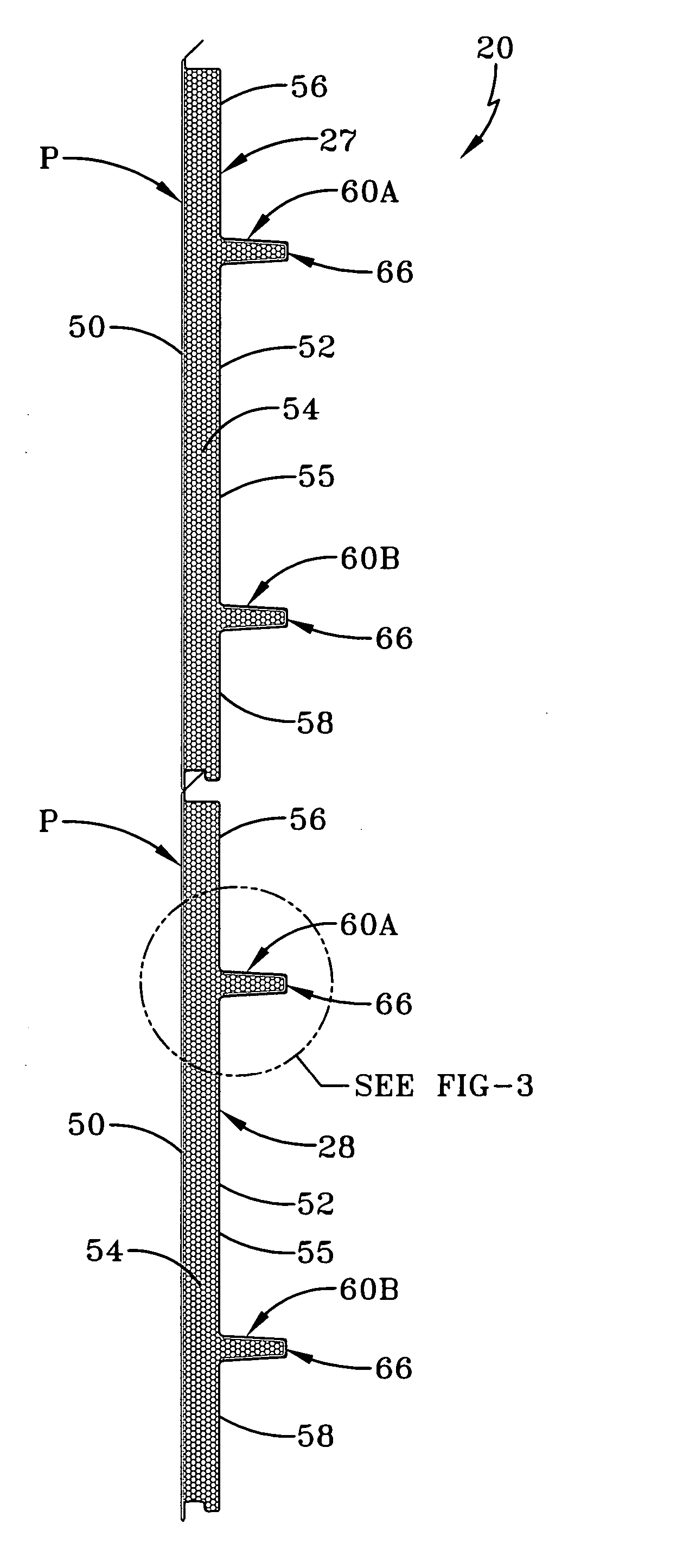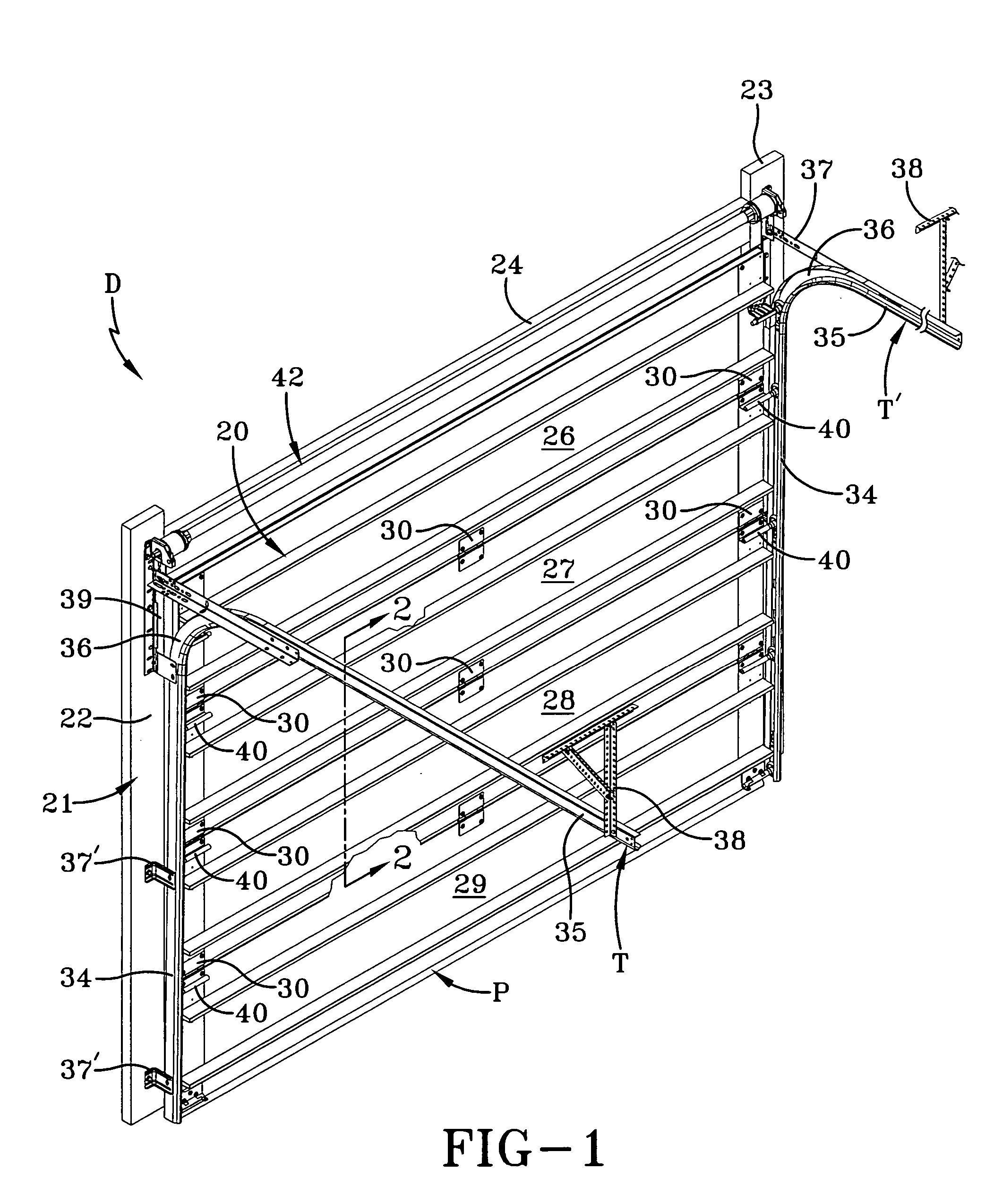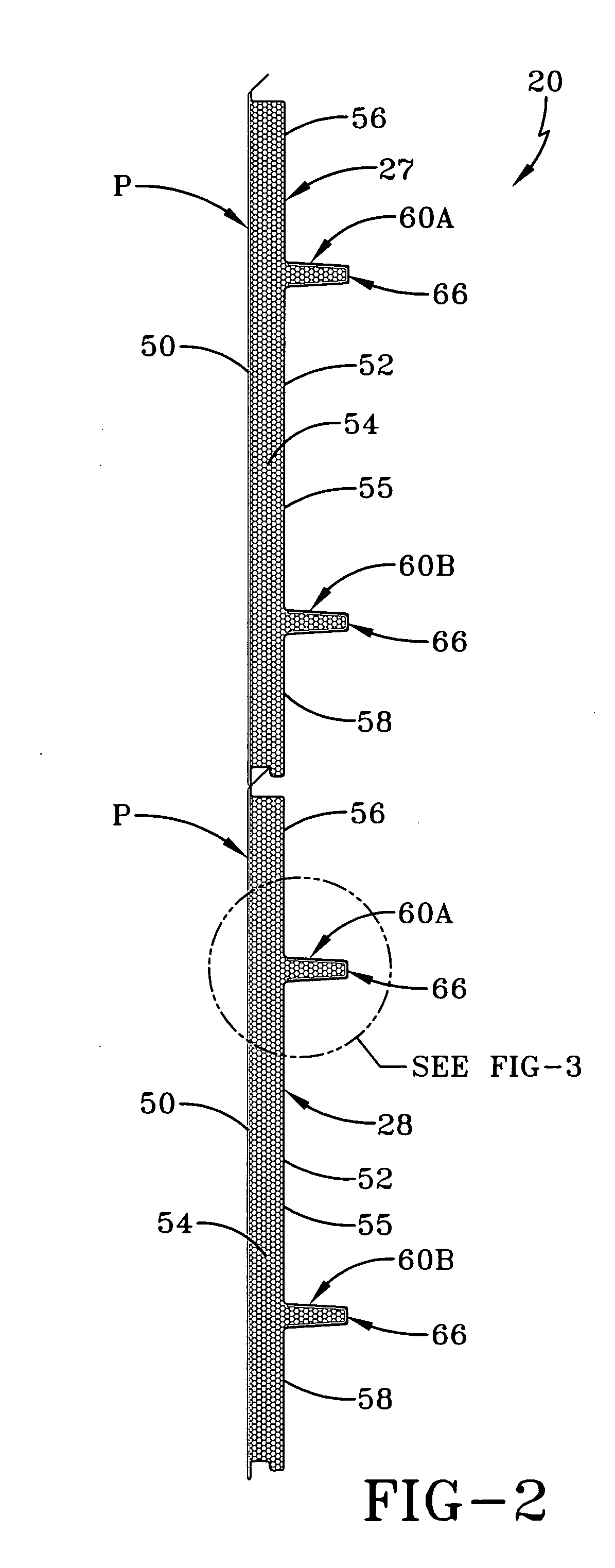Reinforced sectional door panels
a sectional door and reinforcement technology, applied in the direction of door/window protective devices, construction, building components, etc., can solve the problems of affecting many other components of sectional doors, reducing the resistance of sectional doors, and reducing the resistance of door panels correspondingly. the cross-sectional thickness does not provide proportionately additional resistance to wind load forces, and the modification adds additional expense to sectional doors without appreciating the resistance
- Summary
- Abstract
- Description
- Claims
- Application Information
AI Technical Summary
Benefits of technology
Problems solved by technology
Method used
Image
Examples
Embodiment Construction
[0026] The panel reinforcement system according to the concepts of the present invention is generally indicated by the numeral 20 in FIG. 1 of the drawings. Three groups of panels P, P′, and P″ are used to illustrate the various features of the panel reinforcement system 20. Although only the panels P are depicted in FIG. 1, each group of panels P, P′, and P″ can be used in forming a sectional door D. Each group of panels P, P′, P″ ideally includes at least an upper panel, an upper intermediate panel, a lower intermediate panel, and a lower panel. As such, although only the upper intermediate panels and lower intermediate panels are depicted in association with panels P′ in FIGS. 6 and 7 and with panels P″ in FIGS. 8 and 9, the sectional doors D formed thereby also ideally include upper panels and lower panels, as shown in conjunction with panels P in FIGS. 1-5. However, as those skilled in the art will appreciate, the groups of panels P, P′, and P″ includes as many panels as are re...
PUM
 Login to View More
Login to View More Abstract
Description
Claims
Application Information
 Login to View More
Login to View More - R&D
- Intellectual Property
- Life Sciences
- Materials
- Tech Scout
- Unparalleled Data Quality
- Higher Quality Content
- 60% Fewer Hallucinations
Browse by: Latest US Patents, China's latest patents, Technical Efficacy Thesaurus, Application Domain, Technology Topic, Popular Technical Reports.
© 2025 PatSnap. All rights reserved.Legal|Privacy policy|Modern Slavery Act Transparency Statement|Sitemap|About US| Contact US: help@patsnap.com



